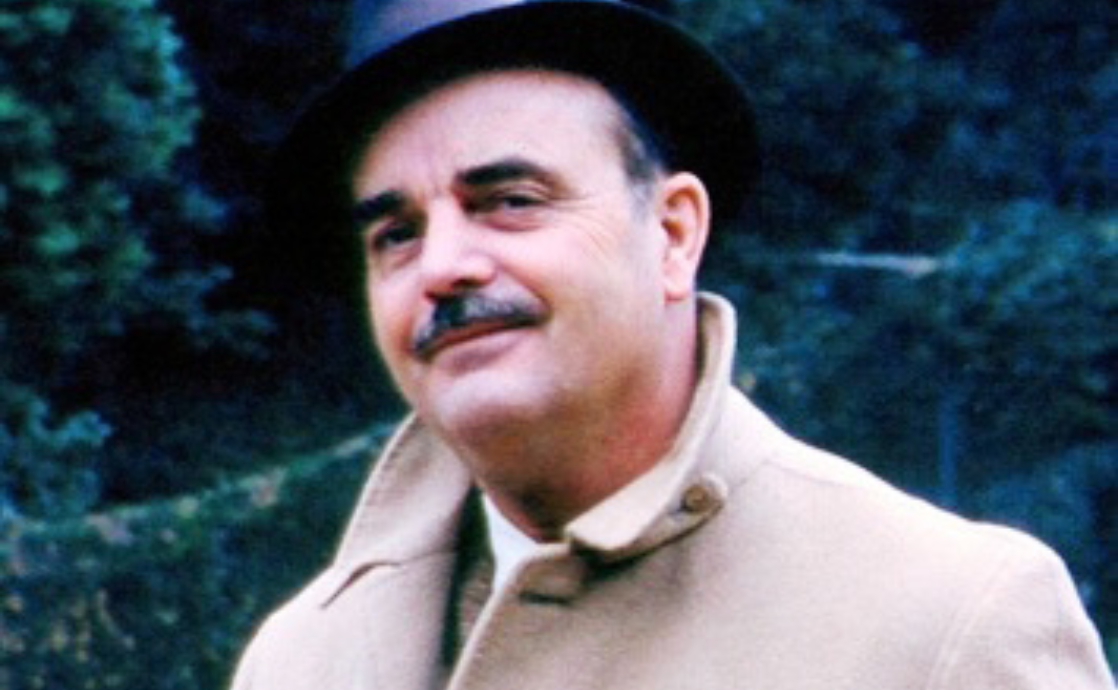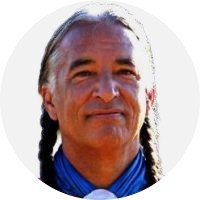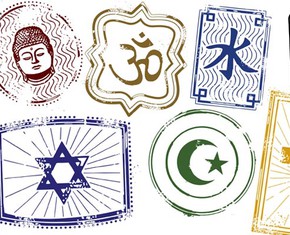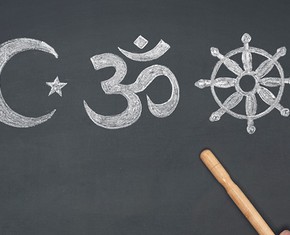The views expressed in our content reflect individual perspectives and do not represent the authoritative views of the Baha'i Faith.
The recently-reissued 1937 book The Gospel of the Redman includes a listing of twelve Indigenous “commandments” – the primary spiritual principles the authors found in many Native belief systems.
Q: Kevin, the well-known Baha’i Hand of the Cause William Sears commented on how vibrantly and powerfully these sacred Indigenous commandments in The Gospel of the Redman resonate and harmonize with Baha’i teachings. Here’s what he had to say:
… I found in The Gospel of the Redman, the following twelve commandments:
One: “There is but one Great Spirit. He is eternal, Omniscient, Omnipotent, Invisible. He pervades all things at all times.”
Two: “Thou shall not make a likeness of the Great Spirit, or portray Him as a visible being.”
Three: “Hold thy word of honor sacred. Lying is at all times shameful, for the Great Spirit is everywhere all the time.”
Four: “Thou shalt keep the Feasts, learn the dances, respect the taboos, and observe the customs of your tribe, if you would be a good member of the community and profit by its strength. For these things are the wisdom of the Ancients and your fathers in the long ago.”
Five: “Honor and obey thy father and thy mother.”
Six: “Thou shalt not commit murder.”
Seven: “Be chaste in thought and deed, according to the highest standard of your Tribe.”
Eight: “Thou shalt not steal.”
Nine: “Be not greedy of great riches. It is a shame and a sin of all unworthiness in a man to have great possessions when there be those of his Tribe who are in want.”
Ten: “Touch not the poisonous firewater that robs man of his strength, and makes wise men turn fools. Touch not nor taste any food or drink that robs the body of its power or the spirit of its wisdom.”
Eleven: “Be clean, both yourself and the place you dwell in.”
Twelve: “Love your life, perfect your life, beautify all things in your life; glory in your strength and beauty. Rejoice in the fullness of your aliveness. Seek to make your life long and full of service to your people. And prepare a noble Death song for the day when you are about to cross the Great Divide.”
This is truly a high moral code that deserves to rank in the preeminent place among the ethical standards of mankind.
So, Kevin, do you agree that these teachings resonate with the Lakota spiritual tradition — the legacy of White Buffalo Calf Woman — that you have embraced, along with the Baha’i Faith?
RELATED: The Ten Commandments of Lakota Life
A: Yes, I do. As you’ll recall, in Part 27, White Buffalo Calf Woman’s Spiritual Message, of our Indigenous Messengers of God series, you drew my attention to these ethical teachings of White Buffalo Calf Woman’s spiritual message, the Lakota messenger of God, as listed in Francis Densmore’s Teton Sioux Music, and then asked me to comment on each of them:
One: Possess “great respect and reverence toward sacred things.”
Two: Live as “belonging to one family.”
Three: Be “always very faithful to promises.”
Four: “Cease hostilities against other nations.”
Five: “Administer help to the sick.”
Six: “Comfort others in time of sorrow.”
Seven: Show “kindness toward every living creature on earth.”
Eight: “Remember the dead.”
Nine: “Love your children dearly.”
Ten: “Above all, lead pure lives.”
So, in Part 28 of our series, The Ten Commandments of Lakota Life, I elaborated further on each of these teachings, which, each and all, are in utter, complete, and profound harmony with the teachings that William Sears highlighted from The Gospel of the Redman.
Q: Thanks for reminding me about that conversation, which, for me, was one of the highlights of our ongoing dialogue and collaboration. What can you say about author Ernest Thompson Seton’s sources of information in order to compile and write The Gospel of the Redman, which so impressed Hands of the Cause of God Hasan Balyuzi and William Sears?
A: It would be fascinating to research Seton’s sources. He was a contemporary of many prominent and widely published Western-educated Indians: Luther Standing Bear, Ella Deloria, Charles Eastman, Zitkala-Ša (“Red Bird”/Gertrude Simmons Bonnin) and others who openly shared Indigenous spiritual inspirations but were always careful to not mention “God” or His messengers to this land, “Turtle Island,” also known as North America.
This is interesting, because the non-Western-educated Indigenous tradition bearers would always emphatically cite the Source first — such eminent Indigenous persons as Chief Gibson, Black Elk, Red Jacket, John Stands in Timber, and including each of Frances Densmore’s informants in her classic work, Teton Sioux Music — all invariably speak of God and His messengers as the source of all good.
Possibly the most visible and strongest testimony is found in nearly all 19th-century central North American photographs of Indigenous people, in which the subject prominently holds his pipe in front of him. In so doing he clearly states: “This is me, my identity, my reality;” and: “I believe in the Covenant of God, the Faith of God;” and further: “I stand for God’s truth and His timeless teachings.” By holding the pipe that way, Indigenous people proclaim: “I believe in God’s messengers, who have brought His covenant.”
The Western-educated Indians and Seton may have possibly understood the limits of what their Euro-American audience were able to comprehend at the time, and wisely couched their message in a palatable and digestible form – mimicking the typology of the Ten Commandments from the Judeo-Christian tradition. In The Gospel of the Redman, author and compiler, Ernest Thompson Seton (with the editorial assistance of his wife, Julia Moss Seton), expertly synthesized the universal truths and verities of all the world’s divine messengers framed in eloquent, appealing language. We owe a great debt of gratitude to Mr. Sears for bringing this brilliant exposition to a wider audience.
RELATED: Baha’u’llah’s “Nine Modes” of Revelation: A Fathomless Ocean
Q: Thank you, Kevin. Let’s close with what William Sears went on to say after reading and absorbing The Gospel of the Redman:
Let us now examine Baha’u’llah’s own words concerning such a moral code and such commandments. To share with you all of the beautiful and astonishing things Baha’u’llah has written concerning such truths would fill many volumes. I shall speak in detail of the First Commandment and of the “Great Spirit,” but shall touch upon the others only briefly. The Baha’is themselves, wherever you find them, will share with you the endless pearls from Baha’u’llah’s immeasurable ocean.
1. One of the most fundamental beliefs in the heart of every member of the noble race of American Indian is this: “There is but one Great Spirit.”
Baha’u’llah speaks constantly of this One Great Spirit, the Most Great Spirit, or the Supreme Spirit which fills all space and is the source of all life. His words on this subject alone would fill a giant volume. The book called The Gospel of the Redman says: “He (God) is eternal, omniscient, omnipotent, invisible. He pervades all things at all times.”
Baha’u’llah states that God is invisible:
From time immemorial He [God] hath been veiled in the ineffable sanctity of His exalted Self, and will everlastingly continue to be wrapt in the impenetrable mystery of His unknowable Essence. … Ten thousand Prophets, each a Moses, are thunderstruck upon the Sinai of their search at His forbidding voice, “Thou shalt never behold Me!”; whilst a myriad Messengers, each as great as Jesus, stand dismayed upon their heavenly thrones by the interdiction, “Mine Essence thou shalt never apprehend!” … All the Prophets of God, His well-favored, His holy and chosen Messengers are, without exception, … but expressions of Him Who is the Invisible of the Invisibles.
Baha’u’llah declares that the attributes of Almighty God pervades all things at all times:
Behold how they have pervaded the whole of creation. Such is their virtue that not a single atom in the entire universe can be found which doth not declare the evidences of His might, which doth not glorify His holy Name, or is not expressive of the effulgent light of His unity.
This is how wondrously and accurately the Teachings of the Baha’i Faith of Baha’u’llah fulfill the worlds of the First Commandment in the moral code of the American Indian. Is it any wonder that the Baha’is in every part of the world feel that the American Indians are truly [a] “prepared people” who will arise in great numbers to sing the love-creating, life-giving music of this song?
As you study the Writings of the Baha’i Faith and dip deeply into the waters of the words of Baha’u’llah, you will find the same rich fulfillment of the truths of the Indian Creed as well as of its Commandments. Since we cannot hold back the sun and time … The Baha’is are aware that this book can no more hold all the beauty and truth of the Indian peoples than an acorn shell can hold the ocean. Yet, we feel that this brief glimpse into the Teachings of Baha’u’llah will lead you to search out the other truths wherein you will find the ocean and not the acorn. – Hand of the Cause of God, William Sears, Address “at this historic Powwow,” July 1–3, 1962, Poorman Reserve, Saskatchewan, Canada, in Littlebrave Beaston, editor/compiler, Compilation on the Indians of the Western Hemisphere (2017), pp. 54–70 (excerpt above, pp. 56–58). https://bahai-library.com/beaston_compilation_western_indians

















Comments
Sign in or create an account
Continue with Googleor